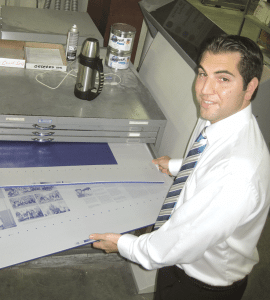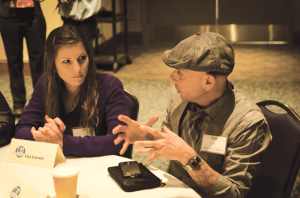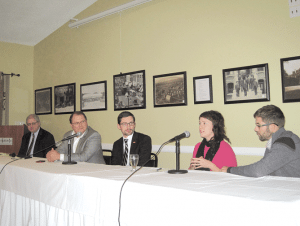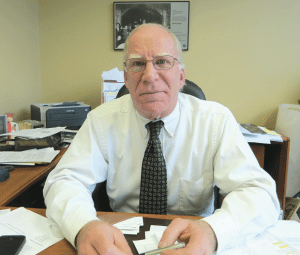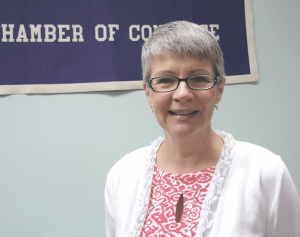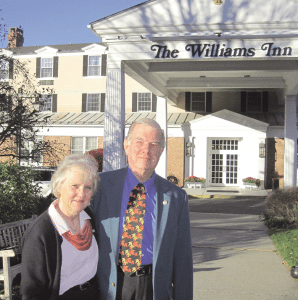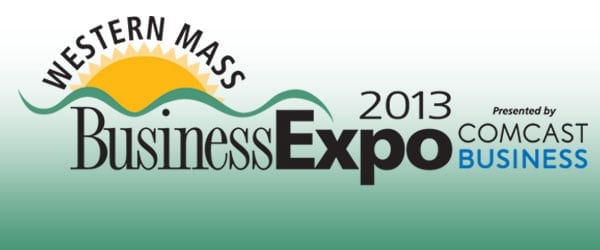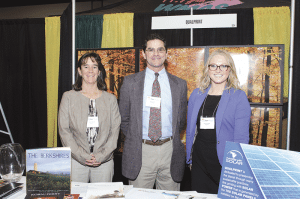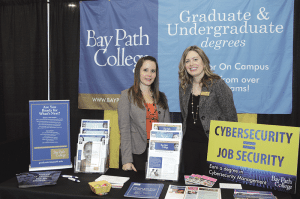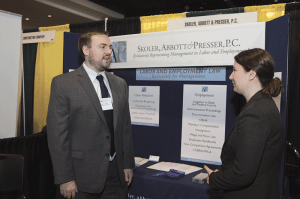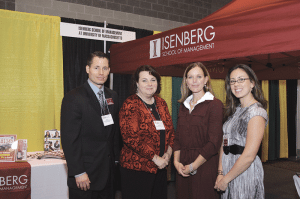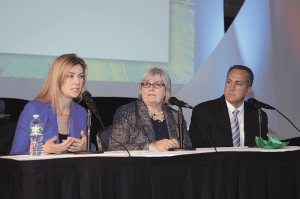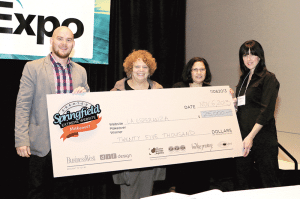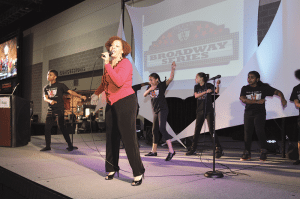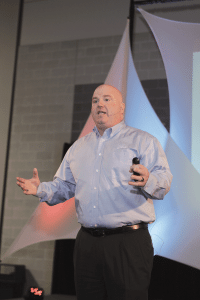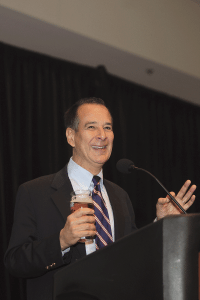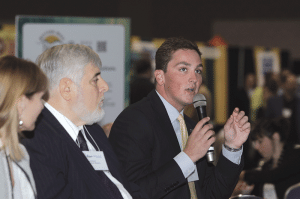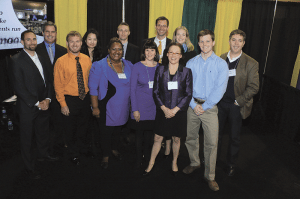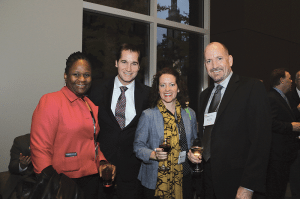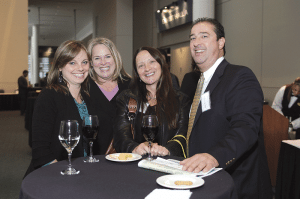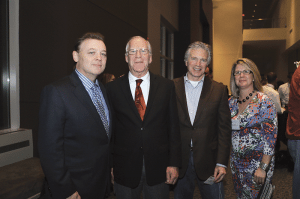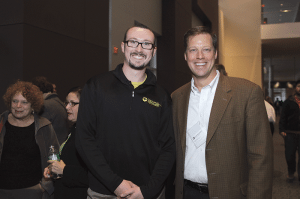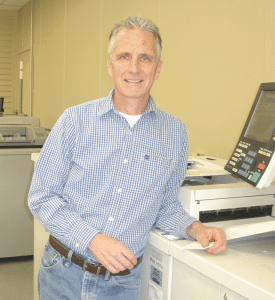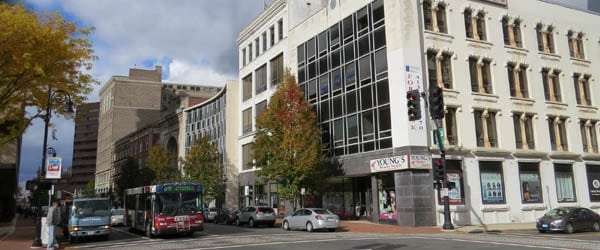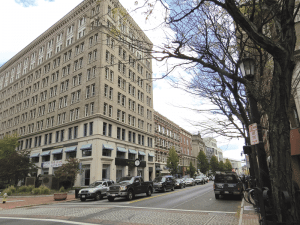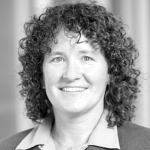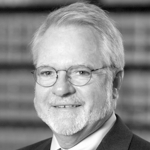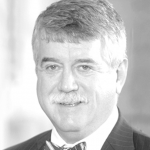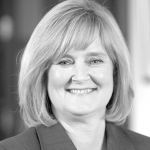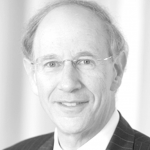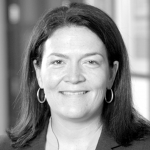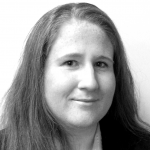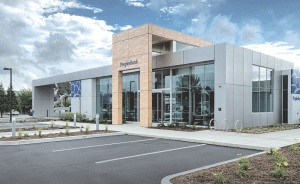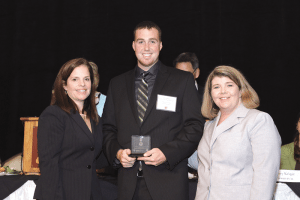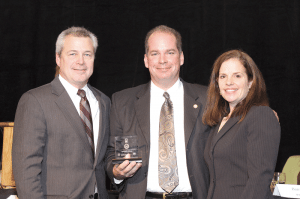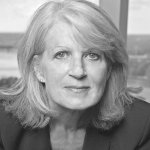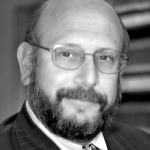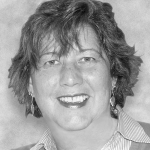The following real estate transactions (latest available) were compiled by Banker & Tradesman and are published as they were received. Only transactions exceeding $115,000 are listed. Buyer and seller fields contain only the first name listed on the deed.
FRANKLIN COUNTY
BERNARDSTON
9 South St.
Bernardston, MA 01337
Amount: $597,000
Buyer: Edward D. Dearborn
Seller: Edward D. Dearborn
Date: 10/07/13
BUCKLAND
98 Elm St.
Buckland, MA 01338
Amount: $140,500
Buyer: Stephen M. Wells
Seller: Tina L. Annear
Date: 10/11/13
COLRAIN
303 Adamsville Road
Colrain, MA 01340
Amount: $150,000
Buyer: Rachel C. Marston
Seller: Elizabeth M. Galvahni
Date: 10/16/13
63 North Green River Road
Colrain, MA 01340
Amount: $300,000
Buyer: Michael B. Cole
Seller: Kate B. Marmaras LT
Date: 10/18/13
CONWAY
3120 Shelburne Falls Road
Conway, MA 01341
Amount: $260,000
Buyer: Huong C. Chow
Seller: Hilma M. Raffa
Date: 10/11/13
DEERFIELD
19 Elm Circle
Deerfield, MA 01373
Amount: $186,000
Buyer: Melony M. Lucas
Seller: James R. Talbot
Date: 10/18/13
67 Graves St.
Deerfield, MA 01373
Amount: $294,000
Buyer: Nathaniel J. Malloy
Seller: Linda L. Prokopy
Date: 10/18/13
3 Sugarloaf St.
Deerfield, MA 01373
Amount: $127,000
Buyer: Jane Trigere
Seller: Bank of America
Date: 10/18/13
ERVING
4 Wells St.
Erving, MA 01344
Amount: $195,000
Buyer: Shane R. Roberts
Seller: James M. Korpita
Date: 10/11/13
GREENFIELD
30 Brookside Ave.
Greenfield, MA 01301
Amount: $160,000
Buyer: Hilma Raffa
Seller: Maynard, Don L. (Estate)
Date: 10/11/13
72 Elm St.
Greenfield, MA 01376
Amount: $132,500
Buyer: Hsien Fu Chang
Seller: George R. Marchacos
Date: 10/07/13
47 Highland Ave.
Greenfield, MA 01301
Amount: $390,000
Buyer: Cornelia A. Miller
Seller: Tracey M. Sutphin
Date: 10/16/13
22 Pleasant St.
Greenfield, MA 01376
Amount: $232,000
Buyer: Michael A. Noyes
Seller: James R. Wade
Date: 10/18/13
126 Poplar St.
Greenfield, MA 01301
Amount: $199,500
Buyer: Gary S. Moran
Seller: Paul N. Billings
Date: 10/17/13
LEVERETT
412 Long Plain Road
Leverett, MA 01054
Amount: $359,387
Buyer: FNMA
Seller: Robert Kaufman
Date: 10/09/13
MONTAGUE
7 Bridge St.
Montague, MA 01349
Amount: $126,000
Buyer: Seth R. Alnsworth
Seller: James W. Wright
Date: 10/15/13
15 Davis St.
Montague, MA 01301
Amount: $675,000
Buyer: Phyllis T. Boucher
Seller: Henry G. Boucher
Date: 10/07/13
11 K St.
Montague, MA 01376
Amount: $150,000
Buyer: Michael Nelson
Seller: Wendy E. Redlinger
Date: 10/18/13
50 Vladish Ave.
Montague, MA 01376
Amount: $185,250
Buyer: Wendy E. Kostecki
Seller: Ronald C. Murley
Date: 10/18/13
NORTHFIELD
23 Holly Ave.
Northfield, MA 01360
Amount: $128,900
Buyer: Ryan P. O’Connell
Seller: Andrea C. Crommett
Date: 10/18/13
73 Pine St.
Northfield, MA 01360
Amount: $132,000
Buyer: Amy L. Stratford
Seller: Douglas A. Baker
Date: 10/09/13
ORANGE
87 Prescott Lane
Orange, MA 01364
Amount: $139,900
Buyer: Joseph A. Dodge
Seller: Nancy R. Kelly
Date: 10/17/13
183 Walnut Hill Road
Orange, MA 01364
Amount: $134,000
Buyer: Pater Walsh
Seller: William S. Page
Date: 10/07/13
SHELBURNE
71 Main St.
Shelburne, MA 01370
Amount: $333,500
Buyer: Craig N. Weatherby
Seller: Karen A. Bouquillon
Date: 10/15/13
SUNDERLAND
392 Montague Road
Sunderland, MA 01375
Amount: $915,000
Buyer: William A. Saltman
Seller: R. Square Realty LLC
Date: 10/16/13
HAMPDEN COUNTY
AGAWAM
37 Bailey St.
Agawam, MA 01001
Amount: $145,000
Buyer: Michael L. Kunze
Seller: Dorothy M. Frenette
Date: 10/17/13
74 Liquori Dr.
Agawam, MA 01030
Amount: $225,000
Buyer: Jeffrey W. Hamer
Seller: David E. Lemieux
Date: 10/11/13
366 Main St.
Agawam, MA 01001
Amount: $160,000
Buyer: Joseph D. Valenti
Seller: Burke, Gerald M. (Estate)
Date: 10/07/13
366 Main St.
Agawam, MA 01001
Amount: $160,000
Buyer: Joseph D. Valenti
Seller: Burke, Gerald M. (Estate)
Date: 10/18/13
976 Main St.
Agawam, MA 01001
Amount: $155,000
Buyer: Ivan Hrytskevich
Seller: Christopher S. Scibelli
Date: 10/11/13
53 Mark Dr.
Agawam, MA 01001
Amount: $364,900
Buyer: Arben Ademi
Seller: Langone Realty Corp.
Date: 10/07/13
131 North West St.
Agawam, MA 01030
Amount: $165,900
Buyer: Jeffrey Hastings
Seller: FNMA
Date: 10/16/13
62 Northwood St.
Agawam, MA 01030
Amount: $240,000
Buyer: Richard B. Smith
Seller: Chad J. Mirabile
Date: 10/18/13
4 Pleasant Valley Road
Agawam, MA 01030
Amount: $152,000
Buyer: Hugh K. Martin
Seller: Veena Juroshek
Date: 10/09/13
140 Ridgeway Dr.
Agawam, MA 01030
Amount: $296,000
Buyer: John E. Nordquist
Seller: Deborah A. Burba
Date: 10/11/13
65 Spear Farm Road
Agawam, MA 01030
Amount: $417,000
Buyer: Romano M. Daniele
Seller: George E. Reed
Date: 10/18/13
38 Zacks Way
Agawam, MA 01001
Amount: $387,800
Buyer: William H. Cullen
Seller: T. Russo Construction Corp.
Date: 10/16/13
BRIMFIELD
295 Sturbridge Road
Brimfield, MA 01010
Amount: $263,080
Buyer: FNMA
Seller: Jeffrey A. Stark
Date: 10/15/13
CHICOPEE
93 Bay State Road
Chicopee, MA 01020
Amount: $186,500
Buyer: Joshua M. Dupuis
Seller: Albert J. Adams
Date: 10/18/13
47 Beaudry Ave.
Chicopee, MA 01020
Amount: $180,000
Buyer: Kayla N. Weagle-Bruso
Seller: Steven J. Laing
Date: 10/11/13
34 Blanche St.
Chicopee, MA 01013
Amount: $135,000
Buyer: Anthony C. Perla
Seller: Richard L. Laflamme
Date: 10/18/13
315 Columba St.
Chicopee, MA 01020
Amount: $125,000
Buyer: Andrew M. Boryczka
Seller: John F. Boryczka
Date: 10/07/13
54 Dorrance St.
Chicopee, MA 01013
Amount: $155,000
Buyer: Darrell E. Lyford
Seller: Constance F. Fedora
Date: 10/18/13
16 Edmund St.
Chicopee, MA 01020
Amount: $149,000
Buyer: Gloria Gonzalez
Seller: Marianne S. Boyd
Date: 10/15/13
68 Factory St.
Chicopee, MA 01013
Amount: $162,000
Buyer: Robert R. Mercer
Seller: Marie T. Appleby
Date: 10/08/13
147 Fair St.
Chicopee, MA 01020
Amount: $186,000
Buyer: Antonio M. Santos
Seller: Maria M. Rafael
Date: 10/09/13
320 Hampden St.
Chicopee, MA 01013
Amount: $164,000
Buyer: Amanda Latour
Seller: Raymond L. Breton
Date: 10/15/13
8 Nash St.
Chicopee, MA 01013
Amount: $165,000
Buyer: David E. Hajec
Seller: Hajec, Bertha I. (Estate)
Date: 10/11/13
61 New York Ave.
Chicopee, MA 01020
Amount: $157,000
Buyer: Stephen A. Pilegi
Seller: Valeriy Kuznetsov
Date: 10/18/13
11 Silvin Road
Chicopee, MA 01013
Amount: $138,000
Buyer: Terry Dyer
Seller: Dorothy A. Davitt
Date: 10/11/13
EAST LONGMEADOW
73 Braeburn Road
East Longmeadow, MA 01028
Amount: $276,000
Buyer: Quintin Jordan
Seller: Moltenbrey Builders LLC
Date: 10/11/13
42 Lee St.
East Longmeadow, MA 01028
Amount: $225,000
Buyer: Rameshbhai A. Patel
Seller: Michael A. Trinceri
64 Pleasant St.
East Longmeadow, MA 01028
Amount: $153,221
Buyer: FNMA
Seller: Christina L. Carlson
Date: 10/17/13
27 Saugus Ave.
East Longmeadow, MA 01028
Amount: $290,000
Buyer: David Tower
Seller: Joseph A. Dascoli
Date: 10/15/13
35 Windham Dr.
East Longmeadow, MA 01028
Amount: $430,000
Buyer: Joseph A. Dascoli
Seller: Christopher M. Buendo
Date: 10/15/13
55 Windham Dr.
East Longmeadow, MA 01028
Amount: $189,000
Buyer: Majid Din
Seller: Paul A. Iellamo
Date: 10/08/13
HOLLAND
2 North Leisure Dr.
Holland, MA 01521
Amount: $235,000
Buyer: Eric T. Mance
Seller: Craig J. Stavola
Date: 10/07/13
HOLYOKE
58 Elmwood Ave.
Holyoke, MA 01040
Amount: $180,000
Buyer: Israel Acosta
Seller: Teresa A. Pudlo
Date: 10/17/13
46 Richard Eger Dr.
Holyoke, MA 01040
Amount: $229,900
Buyer: Arthur P. Cicerchia
Seller: N. K. Lefebvre
Date: 10/09/13
35 Ridgewood Ave.
Holyoke, MA 01040
Amount: $125,000
Buyer: Michael L. Johnson
Seller: Patrick J. Higgins
Date: 10/10/13
2 Rock Valley Road
Holyoke, MA 01040
Amount: $245,000
Seller: Rodney Faille
Date: 10/15/13
LONGMEADOW
15 Belleclaire Ave.
Longmeadow, MA 01106
Amount: $270,000
Buyer: Elizabeth M. Morgan
Seller: Stuart G. Lempke
Date: 10/18/13
225 Blueberry Hill Road
Longmeadow, MA 01106
Amount: $510,000
Buyer: Joseph H. Vandeventer
Seller: Amy J. Wiatrowski
Date: 10/10/13
179 Cambridge Circle
Longmeadow, MA 01106
Amount: $330,000
Buyer: Jeffrey E. Sullivan
Seller: Sandra J. Gauthier
Date: 10/15/13
38 Fernleaf Ave.
Longmeadow, MA 01106
Amount: $290,000
Buyer: Lauren Lanza
Seller: John M. Bowen
Date: 10/09/13
38 Hazelwood Ave.
Longmeadow, MA 01106
Amount: $290,000
Buyer: Neil A. Daboul
Seller: Paul S. Fish
Date: 10/16/13
44 Homestead Blvd.
Longmeadow, MA 01106
Amount: $206,000
Buyer: Linda L. Lasorsa
Seller: Aimee S. Bareiss
Date: 10/11/13
85 Maple Road
Longmeadow, MA 01106
Amount: $267,500
Buyer: Mack A. Lynch
Seller: Denise J. Smith
Date: 10/09/13
10 South Park Place
Longmeadow, MA 01106
Amount: $200,000
Buyer: David Deluca
Seller: Elizabeth Robinson
Date: 10/08/13
LUDLOW
145 Chapin St.
Ludlow, MA 01056
Amount: $274,900
Buyer: Richard Z. Budzyna
Seller: Florinda Dias
Date: 10/18/13
1158 East St.
Ludlow, MA 01056
Amount: $200,000
Buyer: Pedro P. Pereira
Seller: Jeffrey Rolo
Date: 10/15/13
58 King St.
Ludlow, MA 01056
Amount: $157,000
Buyer: Marc J. Dias
Seller: Paul J. Adzima
Date: 10/07/13
182 Lakeview Ave.
Ludlow, MA 01056
Amount: $117,500
Buyer: Maria A. Azevedo
Seller: Mitchell M. Mazur
Date: 10/16/13
146 Oak Knoll Circle
Ludlow, MA 01056
Amount: $211,500
Buyer: Matthew R. Niles
Seller: Lorraine Nutting
Date: 10/08/13
53 Parker Lane
Ludlow, MA 01056
Amount: $335,000
Buyer: Jaime Goncalves
Seller: Charlotte G. Schnur
Date: 10/17/13
Rosewood Dr.
Ludlow, MA 01056
Amount: $130,000
Buyer: Kevin F. Bradley
Seller: Rosewood Meadows Inc.
Date: 10/18/13
Ludlow, MA 01056
Amount: $165,000
Buyer: Seth M. Beal
Seller: Villeneuve, Michelle S. (Estate)
Date: 10/17/13
MONSON
21 Bunyan Road
Monson, MA 01057
Amount: $127,789
Buyer: USA VA
Seller: Pamela J. Manning
Date: 10/07/13
24 Robbins Road
Monson, MA 01057
Amount: $214,014
Buyer: FNMA
Seller: Robert J. St.John
Date: 10/17/13
PALMER
4253 Church St.
Palmer, MA 01069
Amount: $166,500
Buyer: Neal Patel
Seller: US Bank NA
Date: 10/09/13
12 Coache St.
Palmer, MA 01080
Amount: $119,900
Buyer: Louise M. Davis
Seller: Country Bank For Savings
Date: 10/17/13
23 King St.
Palmer, MA 01069
Amount: $125,000
Buyer: David L. Sweetman
Seller: David L. Sweetman
Date: 10/18/13
1569 North Main St.
Palmer, MA 01069
Amount: $1,292,793
Buyer: Colonial Pacific Leasing
Seller: JBL RT
Date: 10/09/13
213 Old Warren Road
Palmer, MA 01069
Amount: $288,000
Buyer: Jessica Moran-Desautels
Seller: Theo Whitaker
Date: 10/11/13
SPRINGFIELD
50 Albee St.
Springfield, MA 01129
Amount: $178,000
Buyer: Ashley A. Nolette
Seller: Francis M. Merrigan
Date: 10/16/13
180 Balboa Dr.
Springfield, MA 01119
Amount: $142,796
Buyer: Wells Fargo Bank NA
Seller: Francisco Torres
Date: 10/16/13
14 Barrington Dr.
Springfield, MA 01129
Amount: $222,200
Buyer: Sean O. Hall
Seller: Emeka R. Nwahiwe
Date: 10/07/13
159 Belvidere St.
Springfield, MA 01108
Amount: $129,000
Buyer: Brenda Diaz
Seller: Hugh M. Goldrick
Date: 10/11/13
66 Benz St.
Springfield, MA 01118
Amount: $144,500
Buyer: Hanh Chanh
Seller: Sara Ashodian
Date: 10/07/13
125 Cherokee Dr.
Springfield, MA 01109
Amount: $152,577
Buyer: Clyde Newson
Seller: David L. Bienvenue
Date: 10/17/13
229 East St.
Springfield, MA 01104
Amount: $115,000
Buyer: William Soto
Seller: Mary J. Dziedzic
Date: 10/11/13
257 Ellendale Circle
Springfield, MA 01128
Amount: $183,500
Buyer: Paul J. Mercieri
Seller: Michelle T. Scecina
Date: 10/10/13
120 Entrybrook Dr.
Springfield, MA 01108
Amount: $151,000
Buyer: Jeffrey Schneider
Seller: Malcolm R. Schneider
Date: 10/15/13
122 Forest Hills Road
Springfield, MA 01128
Amount: $223,000
Buyer: Juan F. Latorre
Seller: Eli S. Santana
Date: 10/09/13
39 Kenwood Park
Springfield, MA 01108
Amount: $136,000
Buyer: Estervina Melendez
Seller: Omega 3 LLC
Date: 10/09/13
27 Lakevilla Ave.
Springfield, MA 01109
Amount: $115,000
Buyer: Heather M. Pietras-Gladu
Seller: Timothy E. Flynn
Date: 10/11/13
68 Margaret St.
Springfield, MA 01105
Amount: $1,770,000
Buyer: JTCB Properties LP
Seller: Colstar Partners LLC
Date: 10/16/13
251 Morton St.
Springfield, MA 01119
Amount: $180,151
Buyer: Beneficial MA Inc.
Seller: Latorya B. Adams
Date: 10/07/13
11 Riverview Terrace
Springfield, MA 01108
Amount: $156,000
Buyer: Michael F. Downey FT
Seller: Cecile M. Roche
Date: 10/18/13
151 Starling Road
Springfield, MA 01119
Amount: $120,000
Buyer: Tatsiana K. Danilovich
Seller: Jennifer Smith
Date: 10/18/13
441 Trafton Road
Springfield, MA 01108
Amount: $282,000
Buyer: Carl W. Reiner
Seller: Charles Marks
Date: 10/15/13
93 West Canton Circle
Springfield, MA 01104
Amount: $143,000
Buyer: Holly A. Paquette
Seller: Mary L. Metivier
Date: 10/18/13
24 Wait St.
Springfield, MA 01104
Amount: $125,000
Buyer: Eliszer Soto
Seller: Terri L. Casiano
Date: 10/18/13
55 Westbrook Dr.
Springfield, MA 01129
Amount: $145,000
Buyer: Richard Goodreau
Seller: Ryan M. St.Germain
Date: 10/18/13
15 Weymouth St.
Springfield, MA 01108
Amount: $165,000
Buyer: Margaret M. Amore
Seller: Edward W. Moran
Date: 10/18/13
27 Weymouth St.
Springfield, MA 01108
Amount: $152,000
Buyer: Michele V. Papageorge
Seller: Peppino M. Maruca
Date: 10/18/13
25 Wing St.
Springfield, MA 01151
Amount: $414,000
Buyer: Carol J. Samuda
Seller: Phuong H. Nguyen
Date: 10/18/13
SOUTHWICK
201 Klaus Anderson Road
Southwick, MA 01077
Amount: $324,500
Buyer: Wasserman Holdings LLC
Seller: Daniel M. O’Neill
Date: 10/11/13
13 Point Grove Road
Southwick, MA 01077
Amount: $210,000
Buyer: David Y. Kirpichev
Seller: Peter C. Vanasse
Date: 10/16/13
WESTFIELD
40 Bristol St.
Westfield, MA 01085
Amount: $163,132
Buyer: FNMA
Seller: Monica A. Rose
Date: 10/15/13
194 Dry Bridge Road
Westfield, MA 01085
Amount: $185,000
Buyer: City Of Westfield
Seller: Arthur P. Cicerchia
Date: 10/09/13
41 Franklin St.
Westfield, MA 01085
Amount: $270,000
Buyer: Franklin Syed Sons Inc
Seller: Power Test Realty Co. LP
Date: 10/17/13
3 Michael Dr.
Westfield, MA 01085
Amount: $250,000
Buyer: Yuriy Koval
Seller: Abhishake Raina
Date: 10/07/13
115 Putnam Dr.
Westfield, MA 01085
Amount: $182,000
Buyer: Vitali Besedin
Seller: Mateychuk, Helen I. (Estate)
Date: 10/10/13
8 Sadie Ln
Westfield, MA 01085
Amount: $202,500
Buyer: Bobby J. Bertone
Seller: Gary E. Speanburg
Date: 10/18/13
75 Zephyr Dr.
Westfield, MA 01085
Amount: $210,000
Buyer: Carlie A. Green
Seller: Hooben, Jane (Estate)
Date: 10/07/13
WILBRAHAM
16 Briar Cliff Dr.
Wilbraham, MA 01095
Amount: $123,000
Buyer: Andrew J. Coyne
Seller: Leonard Viscito
Date: 10/11/13
Bridge St.
Wilbraham, MA 01095
Amount: $130,000
Buyer: Ronald N. Rauscher
Seller: Nelson, Constance M. (Estate)
Date: 10/18/13
27 Pomeroy St.
Wilbraham, MA 01095
Amount: $233,000
Buyer: Jeffrey D. Woodman
Seller: Tinkbuzz LLC
Date: 10/18/13
WEST SPRINGFIELD
30 Elmdale St.
West Springfield, MA 01089
Amount: $170,000
Buyer: Guy Lariviere
Seller: Max S. Construction LLC
Date: 10/11/13
102 Garden St.
West Springfield, MA 01089
Amount: $144,000
Buyer: Tom V. Hguyen
Seller: Douglas M. Henrichon
Date: 10/11/13
90 Laurence Dr.
West Springfield, MA 01089
Amount: $190,000
Buyer: Michael W. Matroni
Seller: Lynn Lafrance
Date: 10/18/13
148 Lower Beverly Hills
West Springfield, MA 01089
Amount: $168,000
Buyer: Joseph P. Saimeri
Seller: Joyce C. Saimeri
Date: 10/09/13
346 Morton St.
West Springfield, MA 01089
Amount: $186,500
Buyer: Feodor Eni
Seller: Bodzioch, Ronald S. (Estate)
Date: 10/18/13
28 Warren St.
West Springfield, MA 01089
Amount: $168,000
Buyer: Dominic Constanzi
Seller: Beverly Cloutier
Date: 10/08/13
2146 Westfield St.
West Springfield, MA 01089
Amount: $249,000
Buyer: Richard F. Seidell
Seller: Alice D. Gamelli
Date: 10/11/13
HAMPSHIRE COUNTY
AMHERST
Bay Road
Amherst, MA 01002
Amount: $119,500
Buyer: Black Bear NT
Seller: Morton G. Harmatz
Date: 10/18/13
887 Belchertown Road
Amherst, MA 01002
Amount: $115,772
Buyer: Lesley A. Pinero
Seller: Pioneer Valley Habitat for Humanity
Date: 10/10/13
50 Cottage St.
Amherst, MA 01002
Amount: $308,000
Buyer: Bridget Dahill
Seller: Jeffrey K. Peski
Date: 10/18/13
46 Rosemary Lane
Amherst, MA 01002
Amount: $385,000
Buyer: Gabriel H. Reif
Seller: Pamela S. Dejackome
Date: 10/18/13
1522 South East St.
Amherst, MA 01002
Amount: $347,500
Buyer: Stephen J. Cavanagh
Seller: Courtney P. Gordon
Date: 10/15/13
172 State St.
Amherst, MA 01002
Amount: $475,000
Buyer: Joshua Lewis
Seller: Caroline G. Arnold
Date: 10/08/13
BELCHERTOWN
191 East St.
Belchertown, MA 01007
Amount: $190,000
Buyer: Ronald Toelken
Seller: Heather N. Palmateer
Date: 10/18/13
211 East St.
Belchertown, MA 01007
Amount: $155,000
Buyer: Michael J. Matilainen
Seller: William P. Larner
Date: 10/18/13
21 Nathanial Way
Belchertown, MA 01007
Amount: $344,000
Buyer: Patrick J. Mignault
Seller: Richard R. Kump
Date: 10/11/13
191 North St.
Belchertown, MA 01007
Amount: $810,000
Buyer: Charles E. Molnar
Seller: Henry E. Whitlock
Date: 10/15/13
10 Old Farm Road
Belchertown, MA 01007
Amount: $240,000
Buyer: Elizabeth Dudek
Seller: Nancy G. Croke
54 Pine St.
Belchertown, MA 01007
Amount: $245,000
Buyer: Nicholas Southwick-Hall
Seller: Stephen Gharabegian
Date: 10/09/13
State St.
Belchertown, MA 01007
Amount: $420,000
Buyer: MC State LLC
Seller: Monson Savings Bank
Date: 10/18/13
EASTHAMPTON
14 Berkeley St.
Easthampton, MA 01027
Amount: $300,000
Buyer: Jeffrey A. Lavallee
Seller: Gerald O. Ethier
Date: 10/08/13
13 Exeter St.
Easthampton, MA 01027
Amount: $227,024
Buyer: Provident Fund Assocs. LP
Seller: Robert F. Herman
Date: 10/08/13
45 Franklin St.
Easthampton, MA 01027
Amount: $162,000
Buyer: Lucretia A. Knapp
Seller: Strong Ave.LLC
Date: 10/10/13
119 Holyoke St.
Easthampton, MA 01027
Amount: $250,000
Buyer: Austin C. Rogers
Seller: K&A LLC
Date: 10/08/13
78 Plain St.
Easthampton, MA 01027
Amount: $270,000
Buyer: Stephanie A. Subocz
Seller: Margaret J. Cernak
Date: 10/16/13
86 Williston Ave.
Easthampton, MA 01027
Amount: $206,000
Buyer: Joanna B. Maxey
Seller: FNMA
Date: 10/11/13
GOSHEN
46 Pond Hill Road
Goshen, MA 01096
Amount: $277,500
Buyer: Howard J. Parad RET
Seller: Lannon, Roger W. (Estate)
Date: 10/10/13
GRANBY
134 Batchelor St.
Granby, MA 01033
Amount: $225,500
Buyer: Daniel M. Rheaume
Seller: Laramee, Richard J. (Estate)
Date: 10/07/13
HADLEY
4 Cemetery Road
Hadley, MA 01035
Amount: $318,000
Buyer: Melissa Gauthier
Seller: Andrea M. Stanley
Date: 10/07/13
HUNTINGTON
2 Knightville Dam Road
Huntington, MA 01050
Amount: $183,000
Buyer: Aaren D. Hawley
Seller: Michael J. Kent
Date: 10/18/13
NORTHAMPTON
1 Amber Lane
Northampton, MA 01060
Amount: $470,000
Buyer: Emily Withenbury
Seller: W. M. Ryan
Date: 10/17/13
4 Beaver Brook Loop
Northampton, MA 01060
Amount: $145,500
Buyer: Kathleen A. Hutchins
Seller: Beaver Brook NT
Date: 10/09/13
150 Drury Lane
Northampton, MA 01027
Amount: $166,000
Buyer: Alec Gross
Seller: USA HUD
Date: 10/15/13
23 Fair St.
Northampton, MA 01060
Amount: $372,045
Buyer: Deepika B. Shukla
Seller: Jeremy D. Ober
Date: 10/11/13
32 Gleason Road
Northampton, MA 01060
Amount: $285,250
Buyer: Marcia L. Wolff
Seller: Marti Newkirk
Date: 10/11/13
64 Hatfield St.
Northampton, MA 01060
Amount: $175,000
Buyer: Nelly Carmona
Seller: Kenneth C. Lebeau
Date: 10/11/13
33 Hawley St.
Northampton, MA 01060
Amount: $1,500,000
Buyer: Northampton Community for Arts
Seller: Hawley Street Funding TR
Date: 10/16/13
12 Hinckley St.
Northampton, MA 01062
Amount: $175,000
Buyer: Glenn Alper
Seller: Constantine, Stephen (Estate)
Date: 10/17/13
175 Jackson St.
Northampton, MA 01060
Amount: $257,500
Buyer: Karen S. Laverdiere
Seller: Alan Parlee
Date: 10/16/13
51 Lincoln Ave.
Northampton, MA 01060
Amount: $295,000
Buyer: Chadd P. Meerbergen
Seller: James E. McKeever
Date: 10/07/13
331 Riverside Dr.
Northampton, MA 01062
Amount: $240,000
Buyer: C. M. Teghtsoonian
Seller: James S. Page
Date: 10/18/13
462 Rocky Hill Road
Northampton, MA 01062
Amount: $195,000
Buyer: Brian J. Crepeau
Seller: Scott D. Bertrand
Date: 10/08/13
SOUTH HADLEY
19 Charon Terrace
South Hadley, MA 01075
Amount: $254,000
Buyer: Roy J. Sabourin
Seller: Sally J. Lemaire
Date: 10/15/13
617 Granby Road
South Hadley, MA 01075
Amount: $183,000
Buyer: Kari L. Scytkowski
Seller: Roy J. Sabourin
Date: 10/15/13
331 Hadley St.
South Hadley, MA 01075
Amount: $126,000
Buyer: CIL Realty Of MA Inc.
Seller: Kenneth E. Guilbailt
Date: 10/11/13
308 North Main St.
South Hadley, MA 01075
Amount: $240,000
Buyer: Stephen B. Jaszek
Seller: Dennis F.McLain
Date: 10/16/13
2 Riverlodge Road
South Hadley, MA 01075
Amount: $325,000
Buyer: Amanda C. Stutman
Seller: Patrick J. Spring
Date: 10/11/13
25 Washington Ave.
South Hadley, MA 01075
Amount: $215,000
Buyer: Eric A. Hernandez
Seller: Lauren E. Cook
Date: 10/11/13
SOUTHAMPTON
18 Bissonnette Circle
Southampton, MA 01073
Amount: $420,000
Buyer: Kenneth P. Brown
Seller: Steven Bennett
Date: 10/16/13
307 College Hwy.
Southampton, MA 01073
Amount: $258,000
Buyer: Gregory L. Bennett
Seller: Donna M. Coleman
Date: 10/18/13
103 Glendale Road
Southampton, MA 01073
Amount: $360,000
Buyer: Michael Yan
Seller: Paul J. Martin
Date: 10/15/13
8 Jonathan Judd Circle
Southampton, MA 01073
Amount: $280,000
Buyer: Pamela S. Dejackome
Seller: Ashtons Acquisitions LLC
Date: 10/18/13
17 Rattle Hill Road
Southampton, MA 01073
Amount: $170,000
Buyer: Robert Fondakowski
Seller: Tomothy R. Wakeling
92 Russellville Road
Southampton, MA 01073
Amount: $280,000
Buyer: Natalya Deven
Seller: Dorothy Kirby
Date: 10/11/13
4 Sara Lane
Southampton, MA 01073
Amount: $125,000
Buyer: David Garstka Builders LLC
Date: 10/17/13
WARE
197 Fisherdick Road
Ware, MA 01082
Amount: $235,000
Buyer: Cory J. Belczyk
Seller: Matthew Martin
Date: 10/10/13
WESTHAMPTON
134 Easthampton Road
Westhampton, MA 01027
Amount: $500,000
Buyer: Thomas Martin
Seller: Clapp, Howard E. (Estate)
Date: 10/15/13
WILLIAMSBURG
5 Kellogg Road
Williamsburg, MA 01039
Amount: $144,000
Buyer: Bryan T. Lashway
Seller: Poverty Mountain LLP
Date: 10/07/13
5 Pine St.
Williamsburg, MA 01096
Amount: $245,000
Buyer: Karen M. Theiling
Seller: Accent Bldg. & Remodelling LLC
Date: 10/11/13
57 South Main St.
Williamsburg, MA 01096
Amount: $256,000
Buyer: Poverty Mountain LLP
Seller: Bryan T. Lashway
Date: 10/07/13





